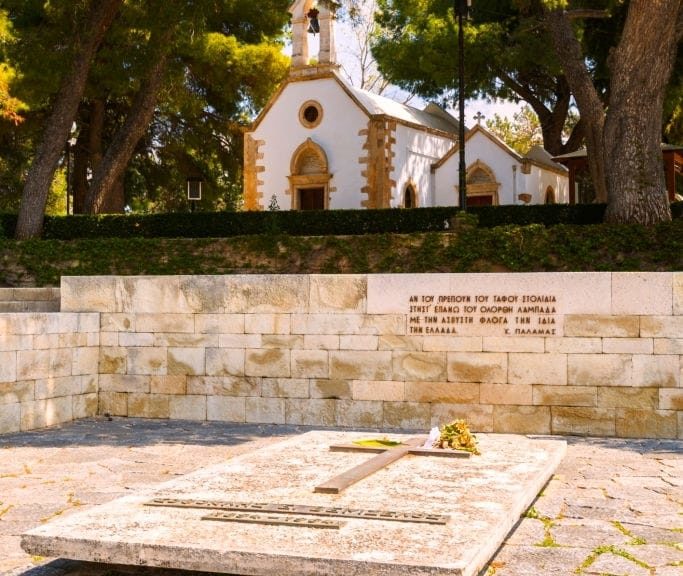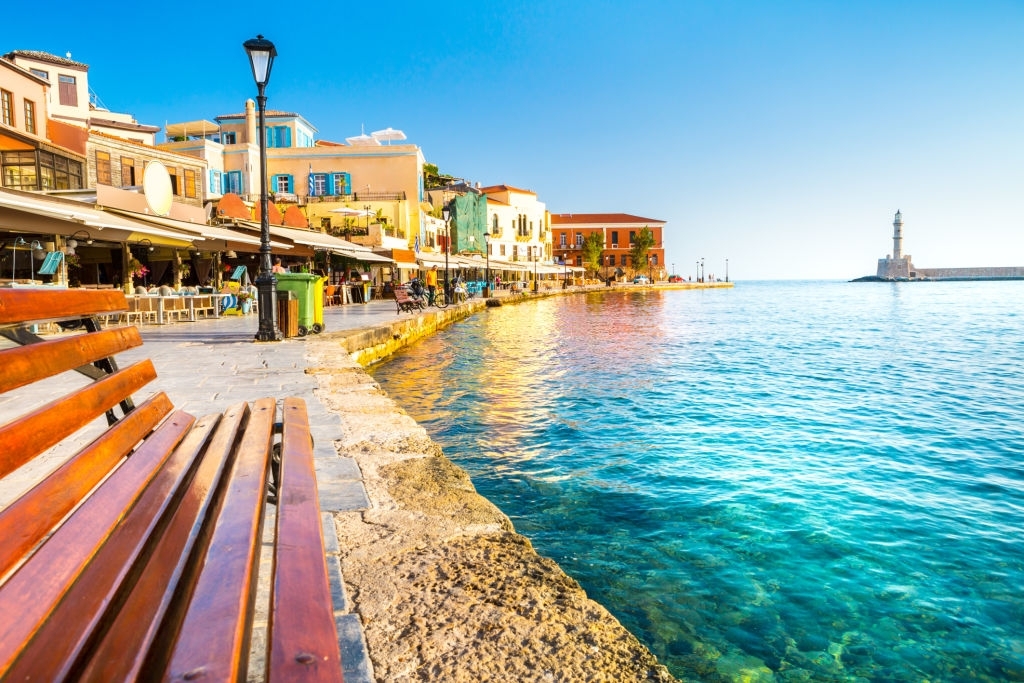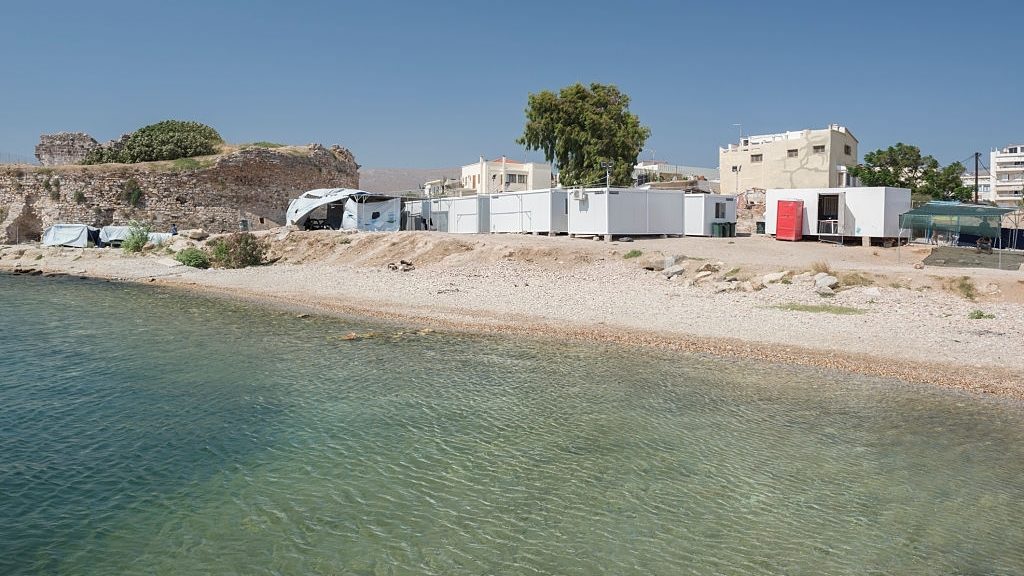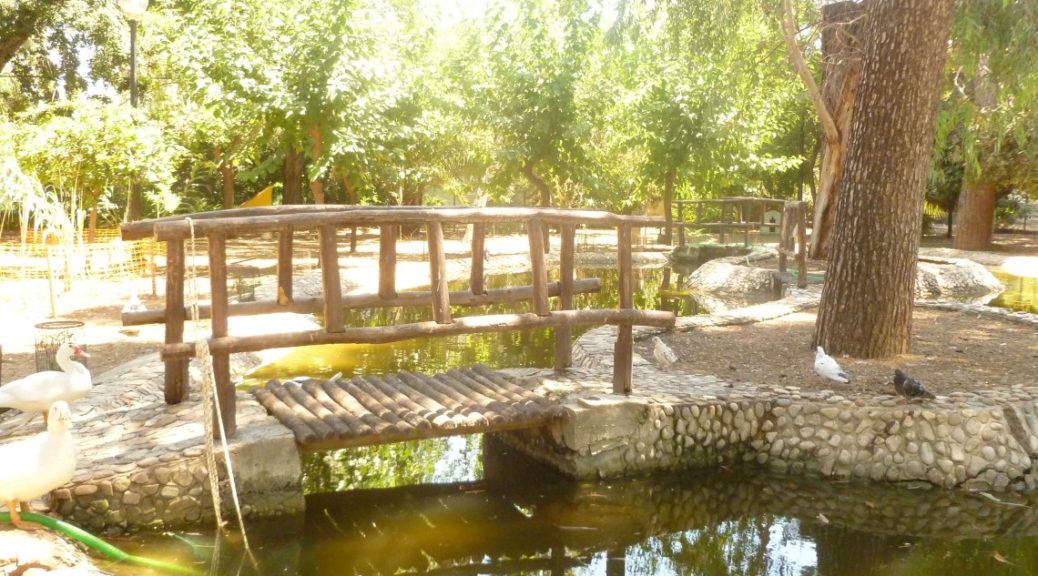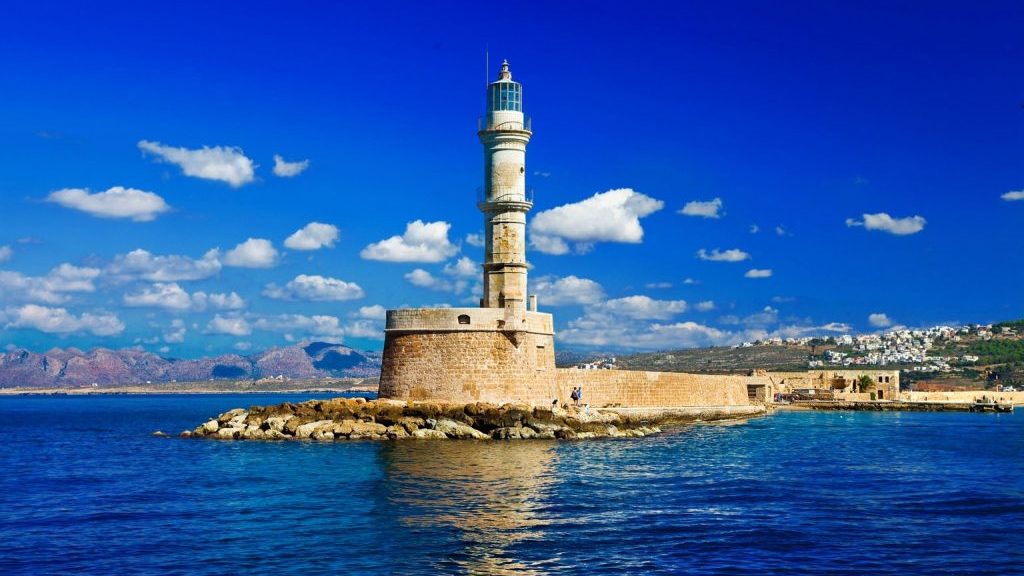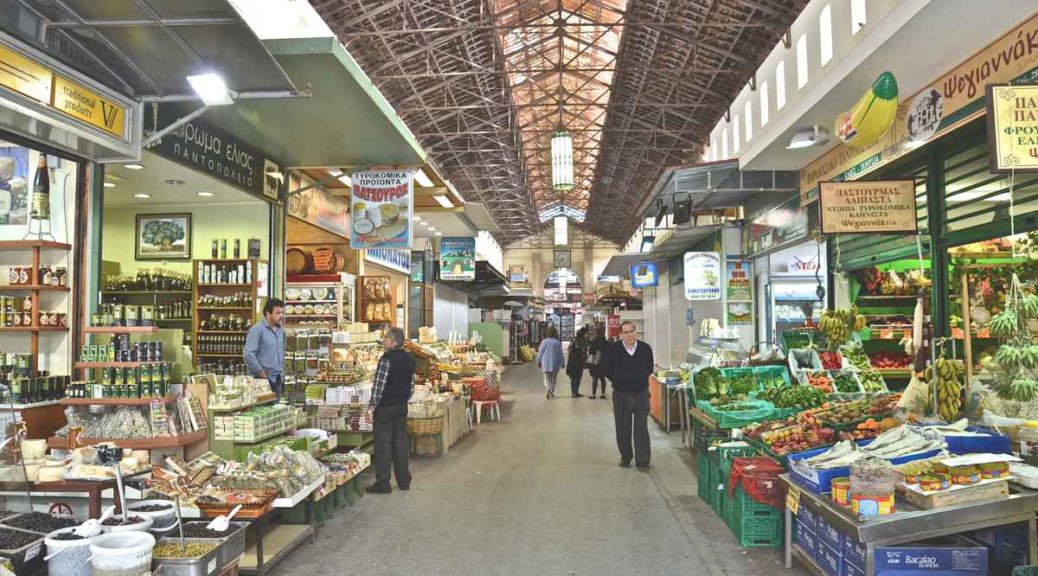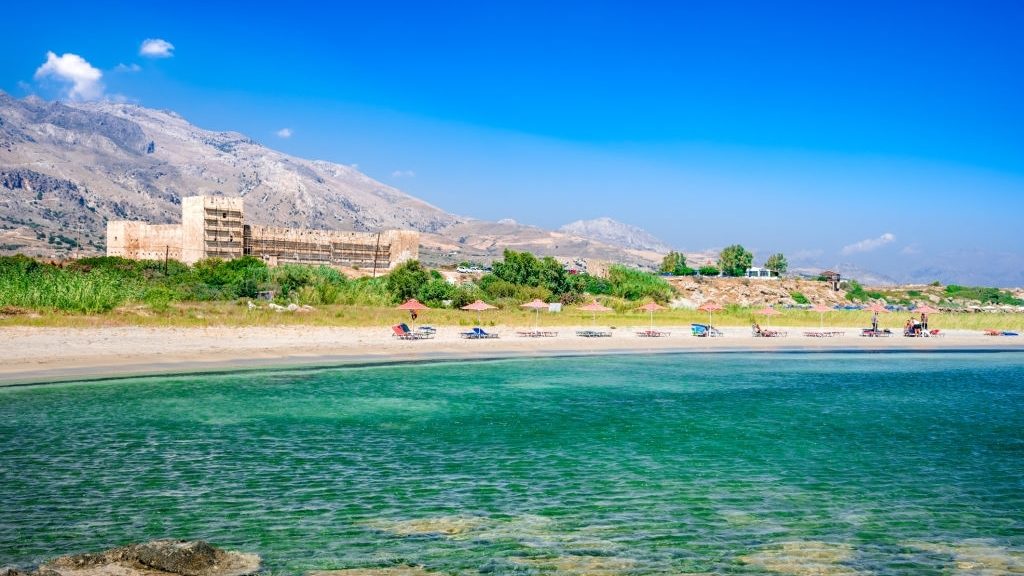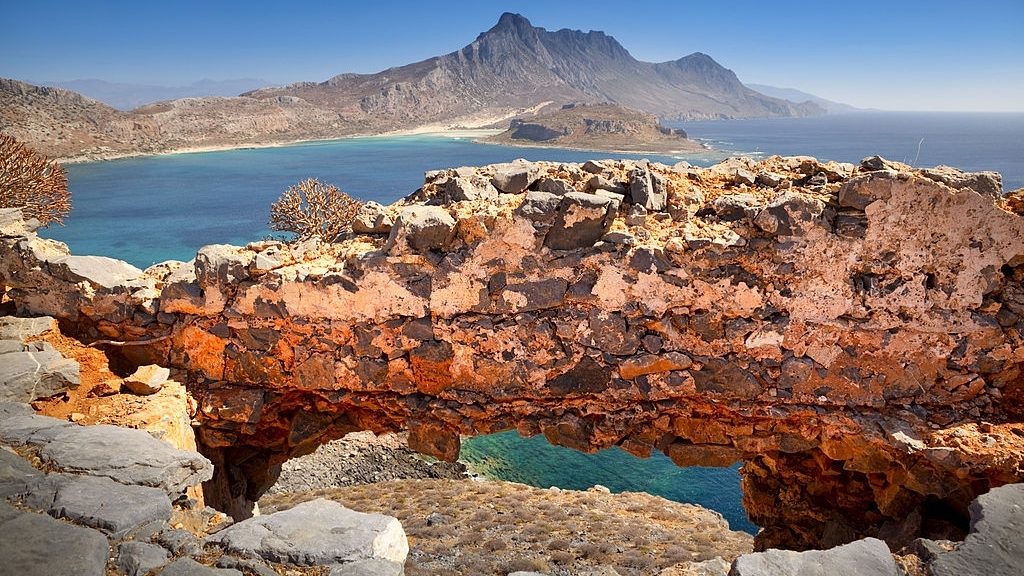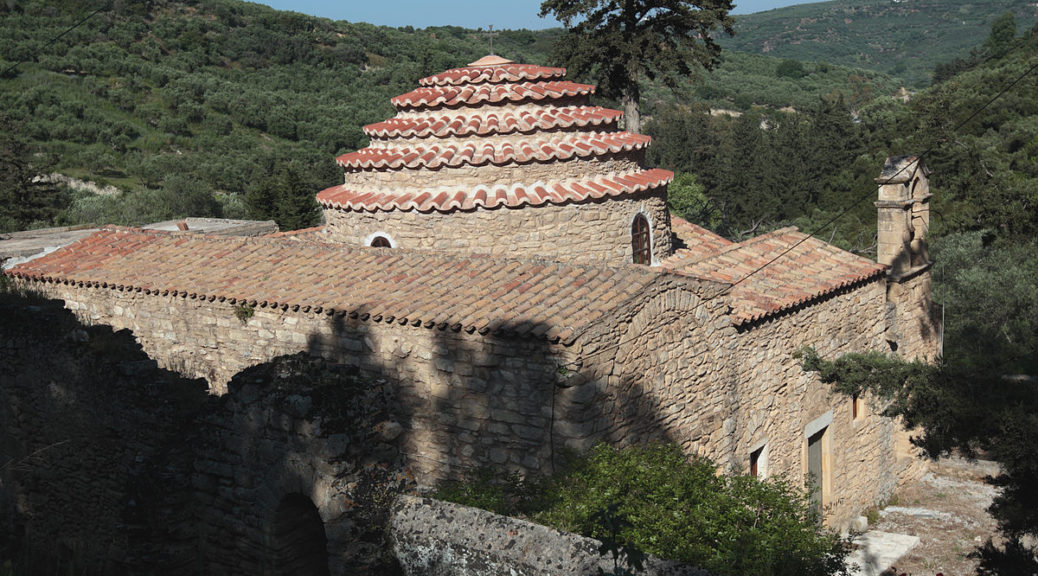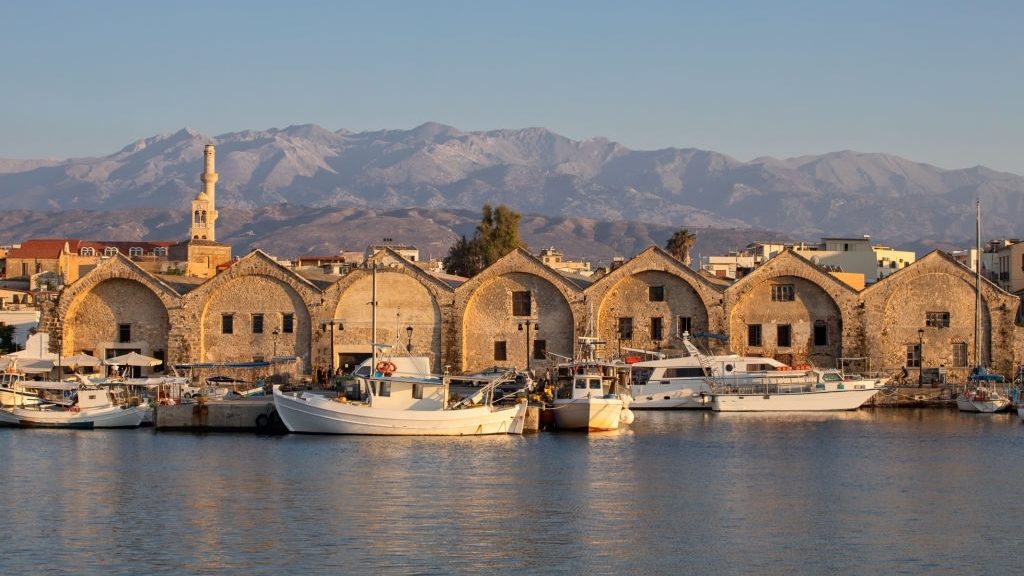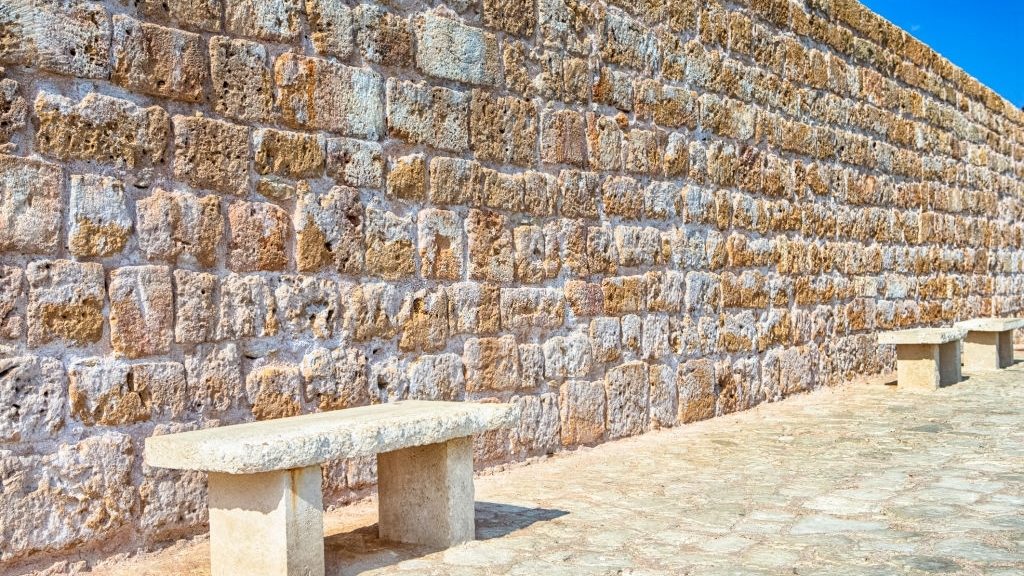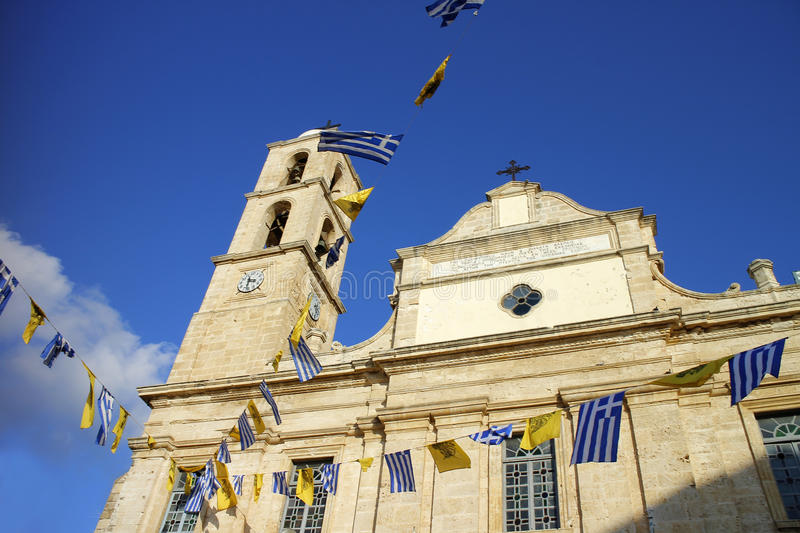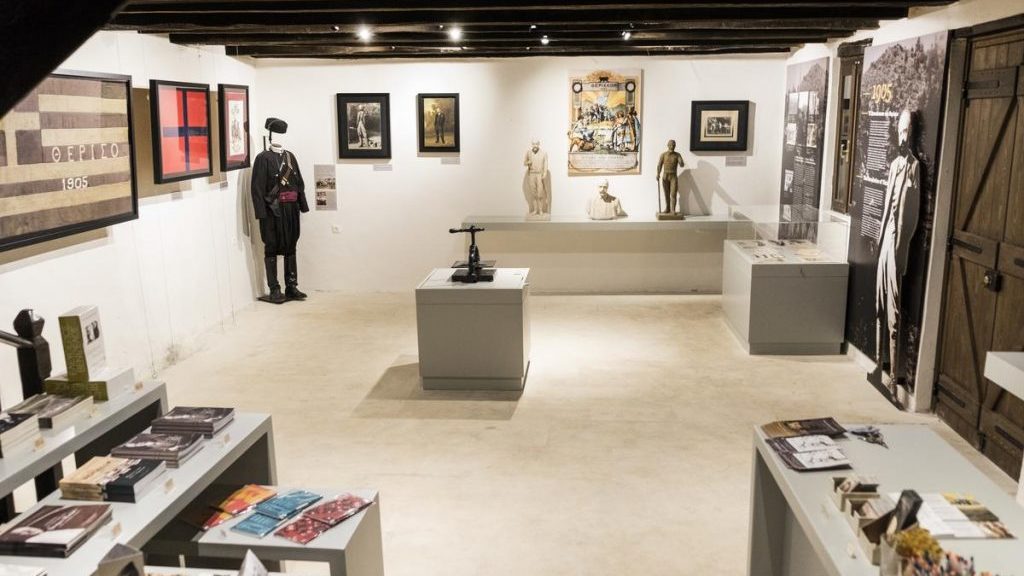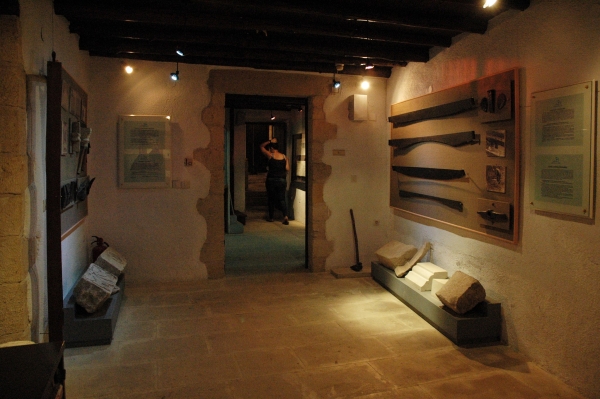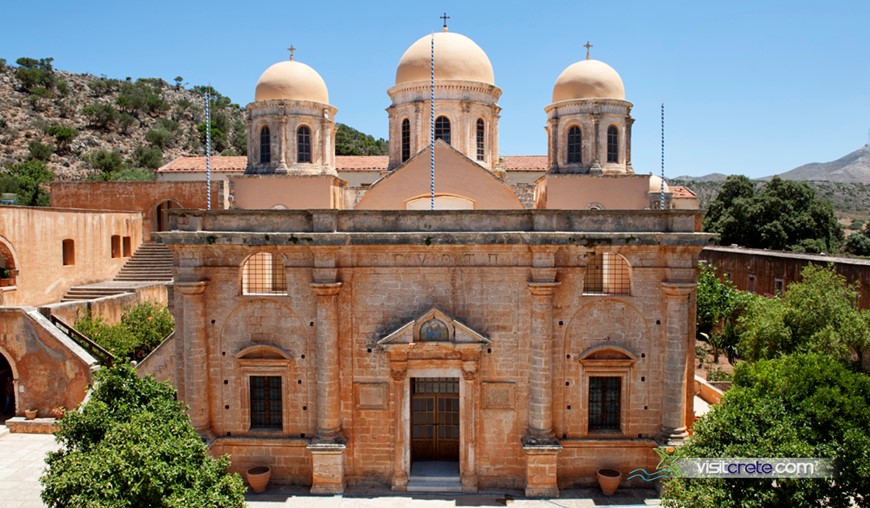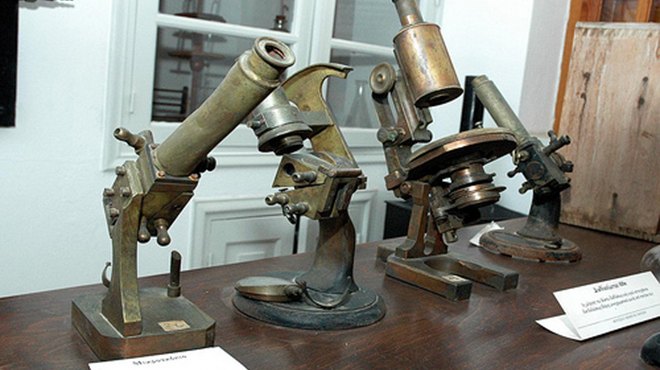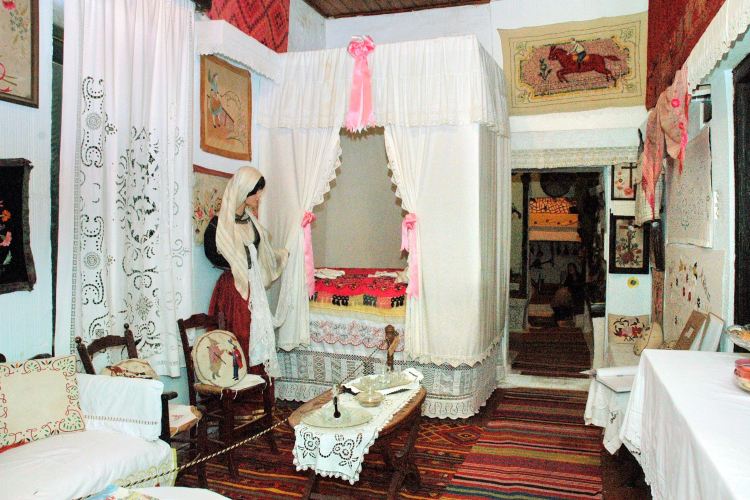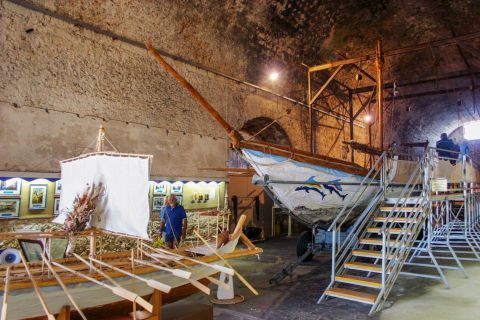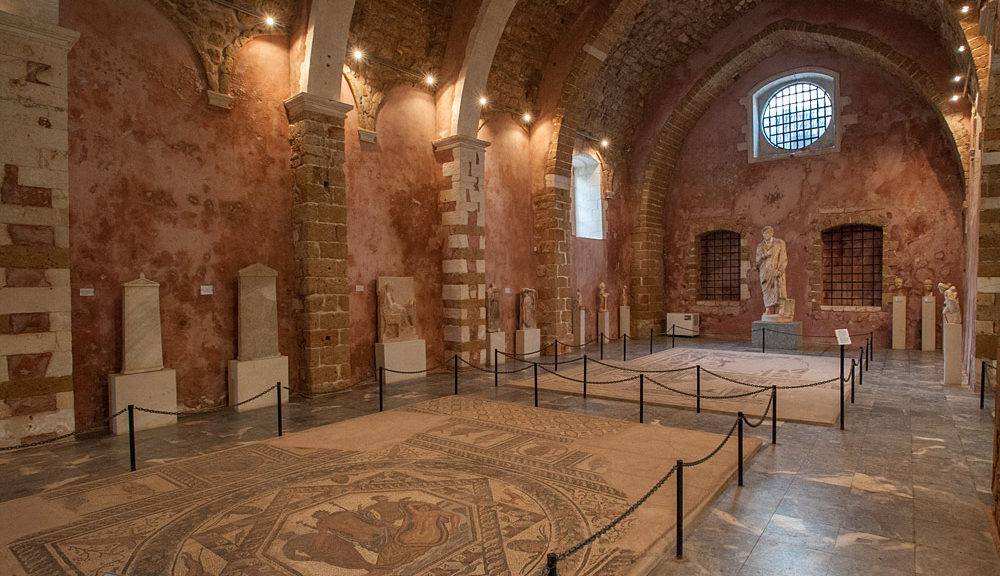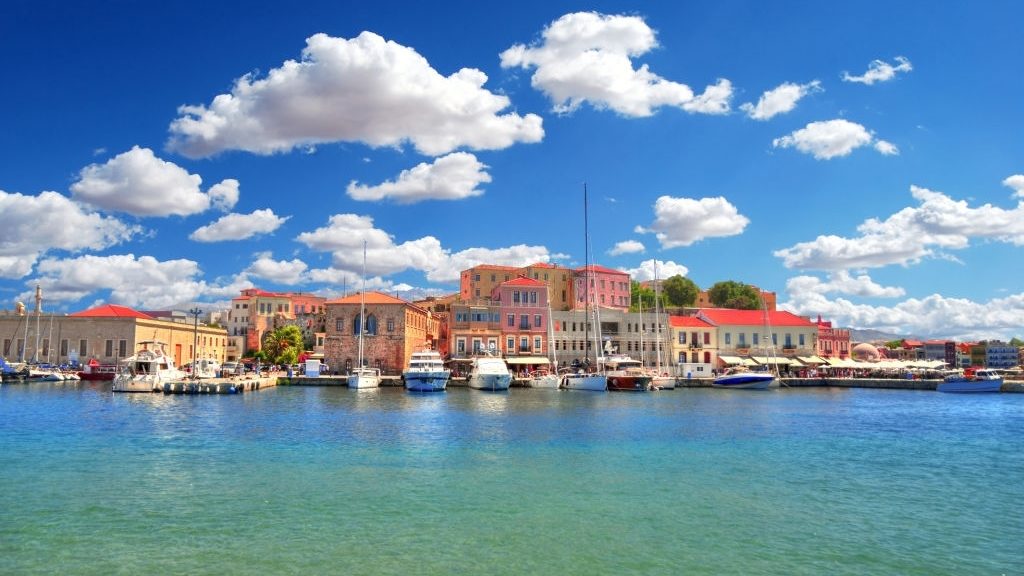On the road towards Akrotiri peninsula, in a location with a unique panoramic view, are the tombs of Eleftherios and his son Sophocles Venizelos. Eleftherios Venizelos, Prime Minister of the Cretan State and later seven times of Greece, and Sophocles’, his second son who was also the Prime Minister of the country between 1943 and 1952, are buried in the park.
At the entrance of the large bay of Souda, there are two small islands, which controlled the movement of ships to and from the large natural port. On the larger of the two islands, the Venetians decided to build a strong fortress to protect the gulf from enemy and pirate ships.
The stunning Public Garden or (Dimotikos Kipos) is located in the central district of Chania, not far from the Municipal Market. In the last years of the Ottoman rule, at a time when the city was suffocating within the restrictive walls, the need for a relaxing recreation area was very strong.
The Venetian Port The Venetian port of Chania, including the Venetian lighthouse, is one of the symbols of the city and a favorite walking area for locals and visitors alike.
The Municipal Market of Chania is a particularly lively spot, full of colours, scents and constant movement, that in addition to being a popular tourist attraction is still used by locals.
The area of Frangokastello was named after the fortress built there by the Venetians in 1371, to control the area. It is believed that building materials from an ancient city of the region were used for the construction.
The Venetian fortress of Gramvoussa was built on the unoccupied barren island of Imeri Gramvoussa, opposite the Gramvousa peninsula. This is where the ancient town of Agneion flourished during the Roman years.
The Rotunda of Episkopi is a remarkable Early Byzantine church, dedicated to the Archangel Michael, that can be seen near the village of Kato Episkopi, in the area of Kissamos. In the early Christian years, it was the seat of the Bishop of Kissamos. In the 6th century AD, the church took the form it has today, and it has been in use continuously since then.
The old town of Chania embodies the long history of the city. In the picturesque alleys, visitors can see the marks left by every civilization that has settled here for a period of time in the past.
The city of Chania was surrounded by walls already in the Byzantine era. The Byzantine fortification had an irregular shape and enclosed the hill of Kasteli. These walls, which were built with stones detached from the ruins of Ancient Kydonia, were repaired in 1252 by the Venetian conquerors, who built a new city within the walls, following a new city plan.
The Cathedral of the Presentation of Virgin Mary also known as Panagia Trimartiri is considered the protector of the city of Chania. The central aisle is dedicated to the Presentation of the Virgin Mary (Isodia tis Theotokou), which is celebrated on November 21. The northern aisle is dedicated to St. Nicholas (Agios Nikolaos) and the southern aisle to the Three Cappadocian Fathers (Tris Ierarhes).
The Historical and Folklore Museum of Therissos in the prefecture of Chania, was founded in 1985 and is housed in the former headquarters of Eleftherios Venizelos. The village of Therissos, is known for the role it played during the movement for the unification of Crete with Greece in 1908.
The Historical and Folklore Museum of Gavalochori was founded in 1967 but was inaugurated in September 1993. It is housed in a building typical of the local traditional house architecture and occupies two levels. It has a modern design, which helps to exhibit and highlight the existing displays and items in a way that guides the visitor through the rooms. There are seven main exhibit rooms in the museum. Each one is focused in a different area of life, starting…
Read More Read More
The Monastery of Agia Triada (Tzagarolon) is one of the most impressive monasteries you will see in Crete. It stands out for its façade with Doric style columns, but also the elements of Renaissance architecture. It was built by the Cretan monks Jeremiah and Lawrence by the Venetian Orthodox family of the Tzagarolon in the early 17th century. The museum is housed in three rooms and the exhibits, in addition to icons, a collection of vestments and samples of small…
Read More Read More
The museum has been open to the public since 1996, on the second floor of the regional office of the General Chemical State Laboratory.
The Folklore Museum of Chania is a private museum created on the initiative of Aspasia Bikaki and Irini Koumandaraki. It is housed in a hall of the Public Library, the entrance to which is located in the yard of the Catholic Church of Chania. It is a quiet and welcoming space, tucked away from the busy main street and often missed by visitors. The founders, passionate about preserving the Cretan art of embroidery and textiles, traveled to many villages themselves,…
Read More Read More
The Maritime Museum of Crete is located at the entrance of the historic Fortress Firkas. It is a beautiful location, that most visitors stumble across on their promenade around the waterfront and worth exploring in full to become acquainted with the rich maritime history of Crete.
The Archaeological Museum of Chania is located in the centre of the Old Town, on Halidon Street. The archaeological collection was initially moved here in 1963 and temporarily housed in the Venetian church of Saint Francis. The church used to be part of a former monastery of the Franciscan Order and is considered nowadays an important monument of the city.
Chania is built on the site of ancient Kydonia, a city that according to legend was founded in prehistoric times by Kydonas, a son of Hermes or maybe the god Apollo. It is also mentioned by Homer as a very important city in Crete.
